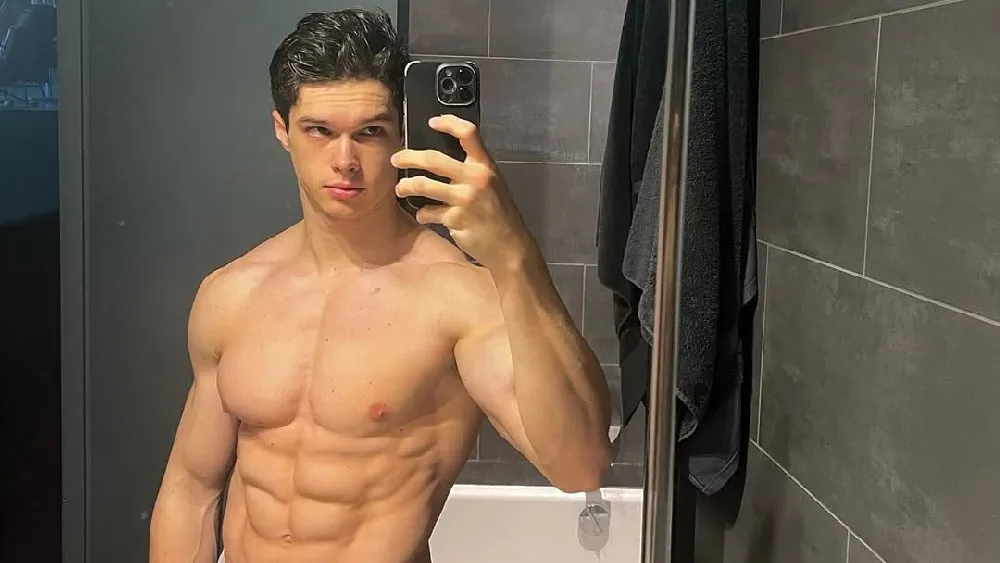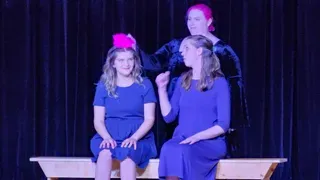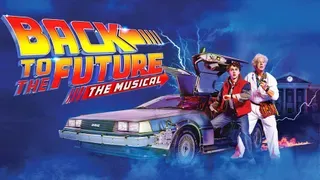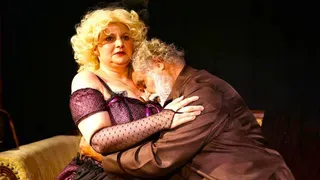September 23, 2010
Poker Face: The Rise and Rise of Lady Gaga
Mark Russo READ TIME: 8 MIN.
The Rise and Rise of Lady Gaga is a portrait of a woman who has a tireless work ethic and hyper ambition to be comes the world's biggest superstar.
The book chronicles her rise to fame starting with the infamous year off of college granted by her father to her never-ending Monster Ball Tour. It's a fascinating look at how Lady Gaga worked the music industry system to rocket herself to megastardom.
The book tries to answer the most pressing questions of our time. How the hell did nice Catholic schoolgirl Stefani Joanne Angelina Germanotta transform herself into the sexually transgressive Lady Gaga? Is Gaga totally manufactured or a canny self-evaluation of Stefani --�in effect, a life as performance art? Is her love for her gay fan base real or self-serving?
You heard that last one right. The book insinuates Gaga's undying love for her gay fan base may be as fake as her eyelashes.
So now comes my 3 a.m. moment: Did I wrap myself in yellow police tape, dance my ass off smashed up against the stage with my fellow construction-tape musketeers at Madison Square Garde for a false god? Maybe. Maybe not.
Is Her Gay Love Real or a Stunt?
The book interviews an array of New York nightlife royalty (author Callahan is a reporter for the New York Post), including the queen herself, Amanda Lapore, and some of her royal court, such as Cazwell, Lady Fag and gay club promoter Daniel Nardicio. The crew all has recollections of her being nice, hard working, very professional and they loved her performances. But they also say she was never a real fixture on the NYC gay scene.
Most of the gay royals were called into action by a gay marketing firm hired by her label to promote her single "Just Dance." Lapore consulted with Gaga on her Rolling Stone cover. Cazwell did a gig with her at Boysroom. Nardicio got the booking of his life for his Cherry Grove underwear party. And Lady Fag recalls her memory of Gaga's first known gay performance in NYC at Kenny Kenny's Sebastian.
Her ex-tour tour manager David Ciemny seems to corroborate the gay mafia claims by debunking Gaga's statement to MTV that "I have a lot of gay friends." Ciemny refutes her claim by saying, "She's a girl, she likes guys." Not very conclusive or damning, Mr. Ciemny: Straight girls can have plenty of gay friends. Has Ciemny never heard the term "fag hag"?
Unknowingly, the book does, however, give us some evidence that Gaga may not be some homo-loving heroine. The author exposes that Gaga's two major stylist were straight. Shock! We all know finding a straight stylist in the fashion industry happens about as often as John McCain gets a hard-on without Viagra. But come on, is finding two straight guys in the fashion scene really enough evidence to conclude that she is a "Mary come lately" to the gay scene?
The stiletto in the coffin may be her relationship with media whore Parez Hilton. David Ciemny makes another outrageous claim that Lady Gaga "saw him [Perez Hilton] as a spokesman for the gay community." Are you kidding me?!? Perez Hilton is a spokesmen for the gay community ... next you'll be telling me that there a chance Lindsay Lohan will pass her next drug test.
Lady Gaga is supposed to be the most knowing artist in the social networking milieu. So how could she have missed the Facebook fan page: "1,000,000 AGAINST Perez Hilton being the GLBTQ SPOKESPERSON"?
What does Gaga need to do to assure her gay fan base she is the real deal and not some false idol who is using the gay market to break into the mainstream?
Because the fact is that Gaga not only gives a tremendous amount of lip service to the gay community, she puts her money where her mouth is when it comes to supporting gay causes. Not discussed in the book is Gaga's work on MAC Viva Glam with Cindy Lauper, a campaign that donates to the MAC AIDS fund. She also partnered with Virgin Mobile, giving away free concert tickets to people who volunteered eight hours at LGBT youth charities. Not to mention her performance, gratis, at a gala during the latest gay march on Washington.
Certainly in the next printing of the book will include a chapter called "Gaga goes to Washington." Gaga has put her self right in the middle of the Don't Ask Don't Tell debate with a Tweet, a meat dress and stump speech in Maine.
She has turned a story that would have been buried in a newscast to the lead story that every talking head had an opinion on. She garnered responses from political heavyweights such as Senate Majority Leader Harry Reid, Sen. John McCain and Sen. Christian Gellibrand. Could this "pop diva turned political advocate" be heading to Washington next? Senator Gaga maybe?
Which is her gay fans to believe: a disgruntled tour manger or her continued nonprofit actions? I will go with the latter.
Catholic Schoolgirl to Avant-Garde Artist
The book goes on to discuss how a Catholic schoolgirl from an affluent family with a good education and good parents becomes an avant-garde artist. It seems difficult for people to believe that someone who is so hardworking and calculating can be so wacky.
Basically, we believe it's impossible for a person to have a multi-dimensional personality. We are so used to one-dimensional characters like the Jersey Shore kids, we don't want to give someone props who works her way to the top the old-fashioned way -- with solid hard work and talent.
In today's world of reality TV, we reward bad behavior over hard work. Lady Gaga's sends the message that if you really work hard, your dreams can come true no matter what people tell you.
And of course a Gaga Book wouldn't be complete if they didn't accuse her of jacking her style from every possible star on the planet, including Michael Jackson, Liza Minnelli, Judy Garland, Prince, David Bowie, Marilyn Manson and on and on to the point of almost absurdity --�but especially, of course, Madonna. Even though Gaga has obviously borrowed from the past, her critics can't seem to give her any credit for putting her own spin on it.
One of the most remarkable themes in the book is the constant and cruel criticism of her looks. The talent scout who discovered Gaga and put her in contact with her first producer, Rob Fusari, who worked with Destiny's Child and Jessica Simpson, had an open conversation in front of Gaga about how her "look was not right."
Gaga shopped her music to many labels and was consistently told she did not have "the look." It seemed to be a consistent theme for Gaga in her early career. She had the talent and remarkable stage presence but not the look to be a star. In other words, she didn't fit the standard molds of beauty according to the media.
Even after Gaga started to take off, the Blogosphere exploded with rumors of her being a hermaphrodite. For a woman to receive such harsh criticism over her appearance would be devastating to most, but Gaga was said to be remarkably unfazed by the criticism and knew she had the talent -- and the looks -- to succeed.
Despite her controversial look and style, Rob Fusari signed a deal with Gaga to be her producer and eventually had an affair with Gaga, even though he was 18 years her senior. A shocking claim made in the book was Fusari made the advance towards Gaga, and she only pursued the relationship because she was in fear her album would not get made.
Fusari at the time was engaged to his sister in-law and still is with her today. However this statement is somewhat contradicted later in the book when it was said Gaga was in front of her piano writing "Brown Eyes" about her relationship Fusari in tears because she was dating someone she could not be with. A source says Fusari was in the relationship because of the prospect of the money and fame was a rush to him.
Gaga may have gotten her revenge of Fusari. After she was so famously dumped from Island Def Jam by La Read, Fusari pulled some strings at Interscope and got her signed. Shortly after she was at Interscope, Fusari was totally cut out of the picture; he's now pursuing a multimillion-dollar lawsuit against Gaga.
Interscope Finally Frees Her Talent
At Interscope, she finally had a label that thought she was the real deal. She could write, sing and perform. Gaga even started writing songs at Interscope for other artist such as the Pussycat Dolls.
Akon, a daring artist/producer at Interscope, was with the head of the label Jimmy Iovine and heard "Boys, Boys, Boys." He told Iovine he liked it. After that comment, Iovine called Lady Gaga and said, "We really like this song of yours, and we are going to be behind you."
Iovine had worked with such legendary artist as John Lennon, Tom Petty and Stevie Nicks. Conventional thought would be Iovine would not be interested about developing an oddball artist since he had worked with such heavyweights.
It is true that Iovine was all about the hit single. And Lady Gaga didn't have her hit single yet. Gaga continued writing songs until one day Gaga wrote a song that changed her life. Iovine heard "Just Dance" and immediately knew it was epic. He put the full weight of the company behind the track and it made her a star.
It wasn't easy street after "Just Dance." She constantly toured promoting herself non stop taking every gig she could get, including water parks, high schools and, yes, an underwear party in Cherry Grove. What is amazing is that she never complained about doing any bookings, including a water park where it was over 100 degrees and she was in full Lady Gaga garb.
She was asked, "Don't you have something cooler to wear?" She responded "No, this is the look. It doesn't matter how hot it is."
With all her efforts, however, radio stations were not playing "Just Dance"; Lady Gaga goes back in to the studio to do 150 new cuts of the song for every radio station in the US so that each track would have the stations' call letters.
Well, as we all know the song did eventually take off and yes, the rest is history.
The book is an interesting read to understand the inner workings of the music industry and how an artist is developed. It's truly amazing to learn about the massive effort Lady Gaga invested in herself to make herself a true superstar who is now on the cusp of icon status. Like her or loathe her, Lady Gaga is fascinating, she's integrated herself into the national consciousness, she's become a part of the political landscape, she's a style icon, and she's become a woman the right and the left crave to learn more about.
One of my favorite Lady Gaga quotes not included in the book is "We all need an image that screams, 'I'm an individual!' I think Jennifer Aniston is beautiful --- she's gorgeous --- but I prefer to look interesting rather than pretty."
Reading the book you get the idea of where that thought might have come from. It may also be Gaga's greatest lesson: Maybe we all can't be beautiful, but we all can be interesting.
After reading this book you can't deny she is one very interesting person.
Mark Russo is a part-time computer software engineer and full-time pop-culture maven.







